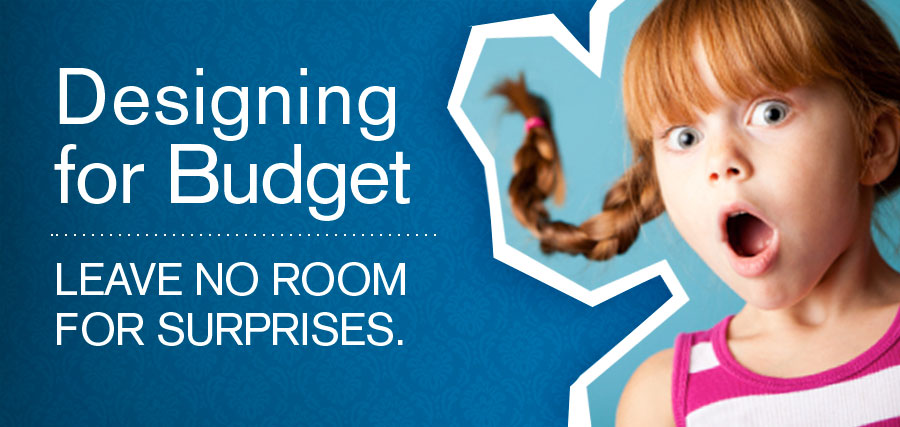As a designer, I am often wanting to use alternative methods for printing, or special papers, inks, or die cuts for a particular project. Early in my career, I would design to my heart’s content only to discover that after the fact, the client didn’t budget for such a piece. So I would have to go back and retool the design to fit the print and production specifications to fall in line with their budget. This not only applies to Print. It can apply to new media depending on what technology is used to deliver your content. Either way, it is a mistake that I don’t make any more.
The reason I don’t make that mistake anymore is that I always ask what the client’s budget is. Most of the time they tell me outright. Sometimes, I get the feeling that some clients think that I am trying to squeeze additional money out of them, but the reality is that I need to know the budget in order to move forward with any kind of success. Much like any other significant purchase you make in this world, you tend to budget for it—even informally. For instance, when you go to buy a new or used car, you know how much money you have to put down—and you know how much money you can afford for monthly payments. After you do the math, you are left with what your budget is. The same goes for house shopping, etc., and the same should go for any business purchase you make—including your brand identity and any marketing collateral.
To avoid running into this problem, make sure to know what your budget is. As a designer, I am trained to be able to work within budgets and give you options based on what you have to spend. Obviously with smaller budgets, you will inherently get less and larger budgets allow for more in-depth research and exploration, and more money for production. I usually separate the two—One budget for design and one for printing. The amount of money you have slated for a project will directly affect how it will need to be printed and that directly affects how it will be designed. Your budget dictates how your project will be designed and printed.
Lets say you have budgets squared away, and are ready to proceed with design and production of a piece. If money is no object (which is rare) then it’s a moot point. Even having unlimited budget can be a challenge, though. You wouldn’t want to add all kinds of techniques and effects just because you can afford them. You want to make sure that the design is in line with the strategy. But if your budget is limited, you can still incorporate some unique production methods if the design and strategy call for it. You just need to be savvy on how to incorporate it without going over budget. For example, lets say you have a cool trade show invitation that you want to incorporate some die cuts to get the message across but you are limited in budget. To offset some of the cost, you could revert to printing in one color vs. full color, and that might make room in your budget to allow for the die cut. So, as the designer, it is my job to solve the challenge of designing something that is going to be successful and on strategy, but still keep within budget. It is important to be realistic about your budgeting. You aren’t going to get top-notch design and final outcome for rock bottom costs. The old adage “you get what you pay for” applies here.
To avoid any potential problems, figure out your budget PRIOR to beginning your project. If you have no clue what your budget should be, consult with your designer and tell them what it is you are looking for and they will give you a proposal. That will give you a benchmark in terms of cost and you can go from there. If you have any questions regarding how budgets affect design and vice-versa, or if you would like a proposal for an upcoming project, contact me and I will be happy to help with a free consultation. Just click on the contact tab and let me know, or leave a comment.

